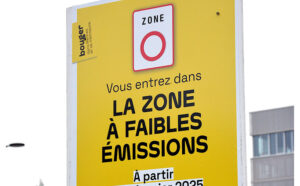Our correspondent Ian Packham reports exclusively for Air Quality News from Pakistan, as he travels around the country by foot tracking the effects of the climate crisis.
The Chinese border is about 50 miles to my back as the crow flies, putting me at one of the furthest points north I can go in Pakistan. Formidable walls of rock rise all around me – the Karakorum Mountains. Some of the highest peaks in the world (the K in K2 is an abbreviation for Karakorum), they are bulbous in form. Their colours constantly shift with the light, from mousy greys to vibrant oranges. Their ragged peaks, free of vegetation, pierce the cloudless blue sky.
There’s no wont of vegetation here though. On the valley floor of the Hunza River, small orchards containing apples ready for harvest edge both sides of the Karakorum Highway, the only road in or out. Among them sit apricot trees, their fruit already plucked from the branches, drying in the sun for sale in the markets. The Hunza region is famous for them. Gifted a half kilo, I can tell you these flavoursome fruits are nothing like the tasteless discs we get back home.
But I haven’t travelled from home in Sheffield to the uppermost reaches of Pakistan as a modern-day man from Del Monte. I have been sponsored by Environment Journal to act as a witness to the impact of climate change in the country. All being well, I’ll cross Pakistan’s main climatic zones from north to south, starting with the Karakorum Mountains.
The idea was conceived a long time ago, in that golden age before coronavirus put pay to everyone’s travel plans. Given the devastating flooding we have witnessed on the news, this trip couldn’t be timelier.
I am not a climatologist. I am an adventurer, travel writer and after-dinner speaker. But even I can see that the world is not what it once was. And it is, the science agrees, mostly our fault.
I may not look it, but I am 38. While I have been alive, levels of carbon dioxide in the atmosphere have increased by 22.6%. If you are my parents’ age, 75% of all global emissions have been released during your lifetime.
With expansive mountain ranges, broad river valleys, searing desert and coastal wetlands, Pakistan is a world in microcosm. The devastating floods of this summer have also seen it become the canary in the coalmine. What happens now in Pakistan is likely to happen much closer to home sometime soon.
My first couple of days takes me across the realms of several major glaciers. The Karakorum has 7,000 of them – for now – forming the largest mass of snow and ice outside of the poles. An increase in global temperatures of 1.5°C puts them at risk of significant levels of unnatural melting, placing the burden of climate change on those least able to deal with the consequences.
The propensity of glaciers means an awful lot of run off. I pass three torrents (the word stream doesn’t do them justice) tumbling into the Hunza River, each like a version of the Olympic canoe slalom. And that’s in a ‘normal’ year. They roar with water still so cold I can feel the temperature different just in the air as I walk by.
The Batura Glacier is one of the Karakorum’s largest. See it from the Karakorum Highway and it maybe doesn’t look like much – a maelstrom of rocks and moraine. At 36 miles in length, it’s long enough to hide the Channel Tunnel in and never find again. The nearby Passu Glacier sparkles blue in the mid-morning light. Trekking onto it has become risky because of growing instability. But the loss of tourist revenue is a minor concern.
If these glaciers don’t survive, it could mean catastrophe for tens of millions who live further south. Approximately 800 million people depend on glaciers to provide water during the dry months. Yet under current projections a child born in Passu today could outlive its glacier. What happens then? To find out would surely be to court catastrophe.
















My first couple of days takes me across the realms of several major glaciers. The Karakorum has 7,000 of them – for now – forming the largest mass of snow and ice outside of the poles. An increase in global temperatures of 1.5°C puts them at risk of significant levels of unnatural melting, placing the burden of climate change on those least able to deal with the consequences.